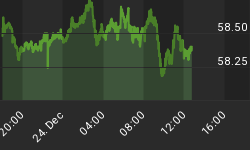As a general rule, the most successful man in life is
the man who has the best information
What is Happening with Cobalt?
Cobalt became one of the two "major" minor metals in this decade's metals cycle, the other being molybdenum. Cobalt also made the short list of four metals that the European Union chose to name in its press release as representative of the 40 metals it is classifying as critical:
Lithium, Tantalum, Cobalt & Antimony
Cobalt's largest market is in the rechargeable batteries that are used in billions of electronic devices from cell phones to laptops to hybrid automobiles. Cobalt is also used in super alloys, catalysts, metallurgical (hard metals), pigments, soaps, adhesives, and magnets. As Asia and Africa become more prosperous, the demand curve for cobalt is expected to be steady or increase over the coming years.
Moreover, supply is typically constrained by the fact that roughly 95% of world cobalt production is a byproduct of nickel and copper mines, with the politically unstable Democratic Republic of Congo (DRC) containing half the world's cobalt supply and representing the lion's share of anticipated future cobalt supply (DRC's 2007 output was equal to the combined production of cobalt by Canada, Australia and Zambia).
One of the most serious and unpredictable risks facing mining operations and investor interests is "country risk" - where the political and economic stability of the host country is questionable and abrupt changes in the business environment could adversely affect profits or the value of the company's assets.
http://www.aheadoftheherd.com/Newsletter/Country%20Risk.pdf
And lets not forget about the recently signed $9 billion joint Congo-China venture in which China gets rights to the vast copper and cobalt resources of the North Kivu in exchange for providing $6 billion worth of road construction, two hydroelectric dams, hospitals, schools and railway links to southern Africa, to Katanga and to the Congo Atlantic port at Matadi. The other $3 billion is to be invested by China in development of new mining areas.
Like copper and nickel, the cobalt price has jumped up in the last two months. Cobalt has roughly doubled from its lows, from $11 per pound to $21 per pound, with one major Chinese supplier now offering at $23 per pound. Traders are suggesting the price could go higher in the near term as many end-users are still nervous about the fragile world economy and don't want to buy long-term contracts; rather they would prefer to buy what they need, when they need it, on the spot market.
But unlike copper and nickel there is no transparent market for cobalt, this means right now speculators have no real influence on the market.
But soon there will be a globally transparent market for cobalt and molybdenum, when the London Metals Exchange (LME) begins trading contracts for the two metals in February 2010. The LME issued updated new guidelines on Monday of this week so suppliers can begin to meet LME specifications in time.
Cobalt contracts will be traded in one tonne lots. The cobalt market is relatively small @ 60,000 tonnes per year, compared to copper's 15.7 million tonnes.
Cobalt demand is estimated to have fallen <3% in 2008 and is expected to decline further this year before recovering in 2010 said the Commodities Research Unit (CRU) Group at the recent Cobalt Development Institute (CDI) conference.
Prices have the potential to go higher because end-users in Japan, a key market, are reluctant to commit to long-term contracts turning instead to the spot market.
For investors, there are few ways to play cobalt, at least until the LME contracts come into place.
Two of the best in my opinion are OM Group (OMG-NYSE; $34) and Geovic Mining (GMC:TSX; $0.59/GVCM-OTCBB; $0.55).
OM Group produces hundreds of metal-based specialty chemicals and powders from such elements as copper, nickel and cobalt - especially cobalt. As the cobalt price has moved up sharply in the last month so has the OMG-NYSE stock.
Geovic is upstream cobalt - its cobalt is still in the ground. It is developing the largest primary cobalt deposit in the world in the African country of Cameroon. Two of the seven similar deposits that their 60%-owned subsidiary GeoCam owns, Nkamouna and Mada, have more than 1 billion pounds of cobalt combined between inferred and measured/indicated resources, with a significant increase anticipated this fall when an updated 43-101 report is released (based on a new, 54,900 meter drilling program). The huge scale of the asset gives investors a lot of leverage to a rising cobalt price.
Geovic has approximately US$59 million cash, or roughly its market capitalization. Not too bad, investors are getting all that cobalt for free!
The cobalt price is moving higher - and we know it's not speculators. Over the last year global cobalt stocks became depleted. Buyers are indicating they want to return to "Just-In-Time" ordering in case the world's economy falters again, and that, combined with supply disruptions from China, should mean the cobalt price will remain steady.
Price stability will encourage development of new cobalt uses. A new LME cobalt contract will also mean increased price stability and transparency for end users. Maybe its time cobalt reached your radar screen.
Richard Mills does not own shares of any companies mentioned in this article.
















